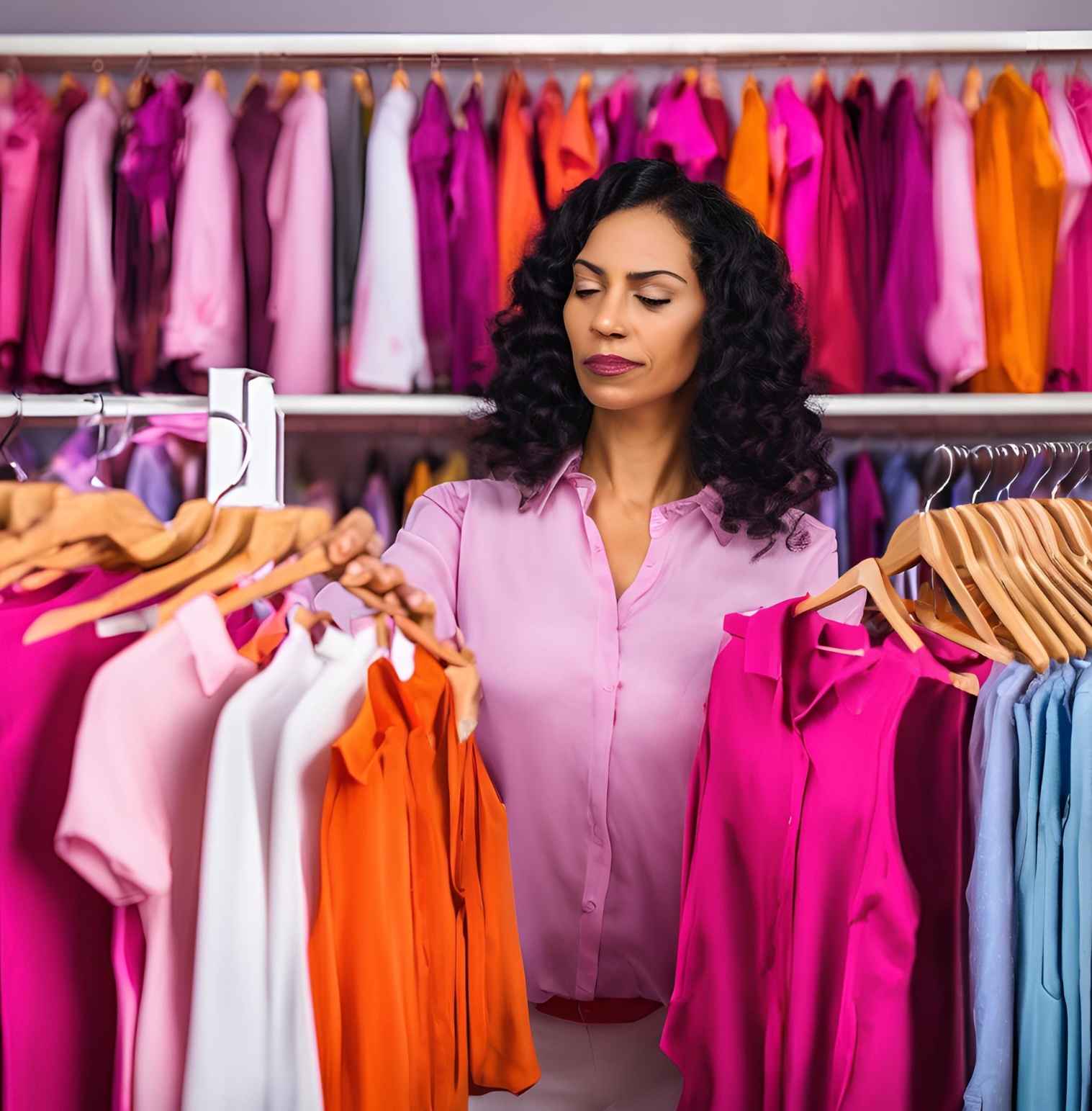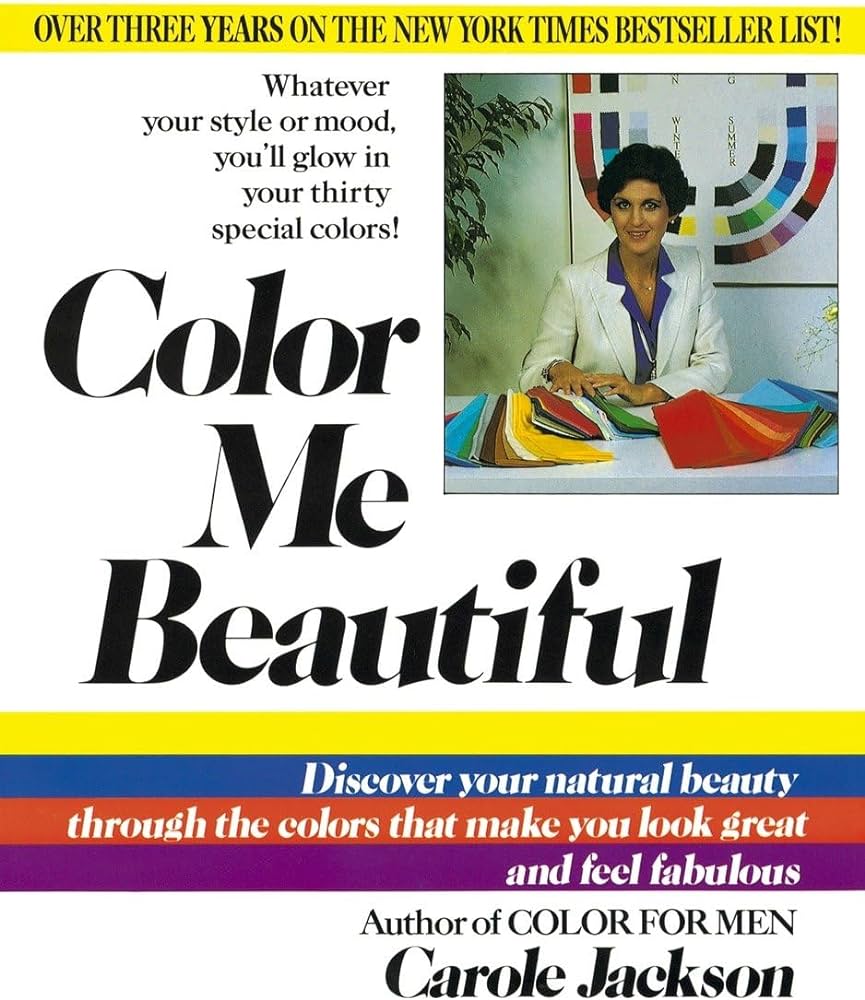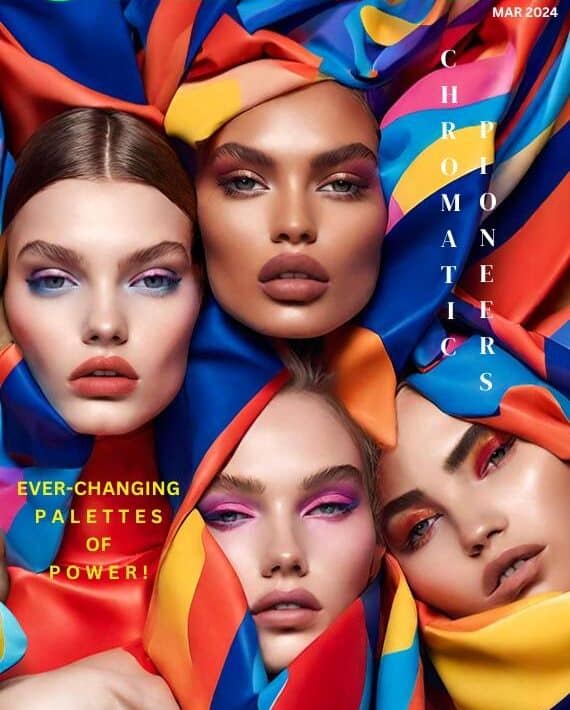How to decide if a Personal Color Analysis is right for you

For Gazetta The Clothing Compass explores a deeper layer of…
Have you ever wondered if a personal color analysis is right for you? Social media accounts are full of creators getting their colors analyzed. Let’s talk about the pros and cons of this service so you can decide if it’s worth investing your time and money.
First I’ll define what a color analysis is and how it works. Then I’ll cover some common reasons people get their colors analyzed. Next is my favorite topic: why you might not get a color analysis, in other words, what are the pitfalls of the process? And lastly, I’ll summarize how you can decide if a personal color analysis is right for you.
What is a Personal Color Analysis?
A personal analysis if a process to determine which colors look most flattering next to your face. The factors that are taken into consideration are the undertone of your skin, and the color of and contrast between your skin, hair and eyes.
The concept of personal color analysis originated in the United States in the late 1970s. Author Carole Jackson became a New York Times Bestseller in the 1980s with her book Color Me Beautiful. This made a big impression on me, because my mom was really into the system. I still have her heavily underlined copy of the book, and remember the fabric swatches she carried in her purse at all times, in case a shopping opportunity came along. Luckily the system has been updated to become more inclusive. The only melanated women to be found anywhere in the 200+ original pages were three models, all assumed to be the same season.


There are different systems for personal color analysis. The most popular are 10- and 12-season systems based on the four seasons in nature: spring, summer, fall and winter. In addition to hue, there are distinctions based on color intensity (brightness or dullness) and value (lightness or darkness). You’ll be analyzed as fitting into a season or combination of seasons, possibly together with one of these words: bright, light, warm, deep, soft or cool.
How Does a Personal Color Analysis Work?
To tell which colors look best next to your face, different colors have to be placed next to your face. That sounds obvious, but the actual process can be overwhelming during a full-service color analysis based on the number of colors you’ll be shown. Pieces of fabrics, called drapes, are placed one-by-one across your upper chest in natural daylight. You’ll be facing a mirror so you can see the results. The light source will be behind the mirror.
The light will reflect off of the drape and onto your face. What happens to your face as a result is based on the color of the drape and:
- the color of your skin, eyes and hair
- the contrast between your skin, eyes and hair
- your skin’s undertone


When you stare at your face in the mirror, you’re looking for what happens to your skin. Your best colors will calm your complexion and have your skin looking alive and almost glowing. Colors that don’t harmonize with #2-4 above can leave your skin looking discolored and dull. Any natural discoloration like freckles, age spots and other hyperpigmentation will be accentuated. Watch for darkness under the eyes and around the mouth. Your skin might even take on an overall unnatural color like green or orange.
This applies to all skin tones. The amount of melanin in your skin does not determine your season. If you are melanated, seek out an analyst who has experience analyzing darker skin tones, just as you would seek out a makeup artist who has experience matching foundation to a wide range of skin tones.
Why Should You Get Your Colors Analyzed?
Here are some common reasons that people get their colors analyzed. Which ones resonate for you?
When you want to understand the science behind color and color theory, a color analysis will give you the facts. Maybe you’ve always had a hunch that you look better (or worse) in certain colors, but want a trained professional to confirm that so you can make quicker, more informed decisions when shopping.
More and more people want to become more conscious about their clothing consumption and buy less. One way to do this is by creating a capsule wardrobe. Buying less means getting more creative about how you combine items. An easy way to make outfits is based on color and print. Limiting the color palette in your wardrobe makes shopping, and for most, combining, easier.
For special occasions, such as weddings or events where dyeing fabric is an option and you’re certain to be photographed a lot, you could apply very specific color advice.
A color analysis relates to what is worn next to, or on, your face. That includes jewelry, eyeglasses and makeup. Skilled makeup artists know color theory and which shades of foundation, blush, eyeshadow, etc. will work best with your undertone.
The most detailed color analyses are performed in-person. However online analysis can be a good alternative if you’re neurodivergent or have a physical disability that limits your mobility.
Why NOT Get Your Colors Analyzed?
Color advice only relates to what you wear next to your face.
It’s purely “objective” advice based on what the human eye sees, and doesn’t take into consideration what you like and dislike, the meaning of colors, or how certain colors make you feel.
Having 100 pieces of fabric draped under your chin in 30-minutes can be an overwhelming and confusing process. What if you don’t see what the analyst sees? It’s completely possible. This is why I only show two-three season possibilities to clients: their season and the second closest, and possibly their total opposite season so they see the difference.
The danger in having an analysis is taking it too literally. My mom felt attached to those swatches in her purse, refusing to buy clothes if they did not perfectly match her palette.
Unless you’re having fabric custom-dyed and your clothing custom-made, you just don’t have that many choices. In a retail shop or on a website, there may be a choice of blue, green and black. You will NOT usually have a choice between six shades of blue. The more you know about exactly which shade of a color suits you best, the more you (subconsciously) reject adjacent colors.
You could say this is positive because it will translate into buying less. I say it’s just adding unnecessary stress to your life. This is why I don’t offer color analysis as a separate service to clients. It can be useful information, but it’s one small part of building a wardrobe you love, that works for you.
Once people know their best colors, they often have the urge to get rid of everything in their wardrobe that is not in their new color palette. This is bad for your bank account and the environment. If you feel compelled to do a closet cleanout, here are some tips to avoid getting rid of too much.
The bigger issue is that color analysis supposedly determines what is “most flattering”, “your best” and “harmonious”. Based on what?? “Flattering” is a word I try not to use by itself because it usually refers to a straight, male gaze of oppression.
Once someone tells you your “best” and “worst” colors, you can’t unsee it, meaning you risk feeling like you cannot wear all those “wrong” colors you already own and used to like. What if you don’t like the colors that objectively look best on you?
COVID-19 forced color analysis to move online. It’s possible to get an accurate personal color analysis online, but it depends on the quality of the photos you submit, and how skilled your analyst is. If you choose to go this route, plan in plenty of time to take and submit multiple photos in the right lighting. If you have a choice, always choose in-person over an online analysis. There’s no substitute for natural daylight and the reflection it makes on your face based on the fabric draped under your chin.
How to Decide if a Personal Color Analysis is for You
Now that you’ve considered the pros and cons, it’s time to decide if a personal color analysis is for you.
The best way to start is at the end, by thinking about how you might react to the results. If your best colors are different to those you already own, will you feel compelled to go on a shopping spree? What if you don’t like the palette your analyst suggests? Will you feel like you’ve wasted your money?
Can you take the advice as a guide or suggestion, or will you feel like you need to follow it literally? This could require a big investment of money and time.
If you decide to invest in getting your colors analyzed, don’t worry about the system used (e.g. 10- vs. 12-season system). Find an analyst you like and trust the system they are familiar with and trained to use.
Personal color analysis can make us forget how to trust our instincts. If wearing a shirt in a certain color makes you look green or orange, chances are it won’t make you happy and you won’t choose it anyway.
In summary, wear what makes you happy! Wear what you feel good in, and chances are you’ll look good in it too.
What's Your Reaction?
For Gazetta The Clothing Compass explores a deeper layer of fashion. How can fashion be used to express our authentic self without exploiting people or the planet? The small little luxuries in life can be found in our closets and our personal style. How we dress is a powerful form of communication. Let’s explore the stories behind what we wear and how and why we wear it.



